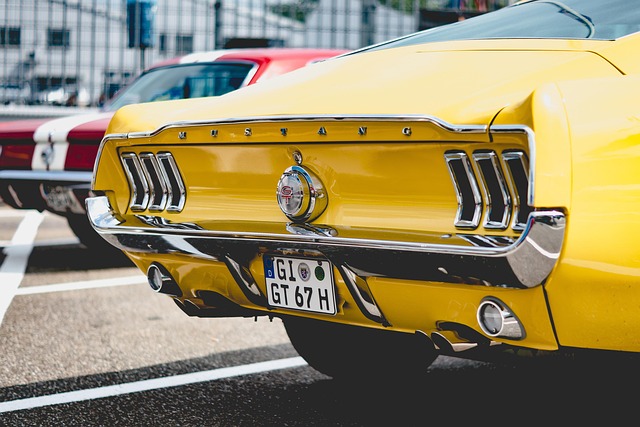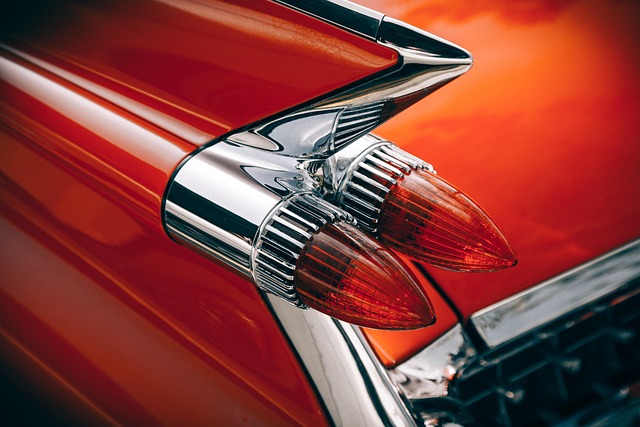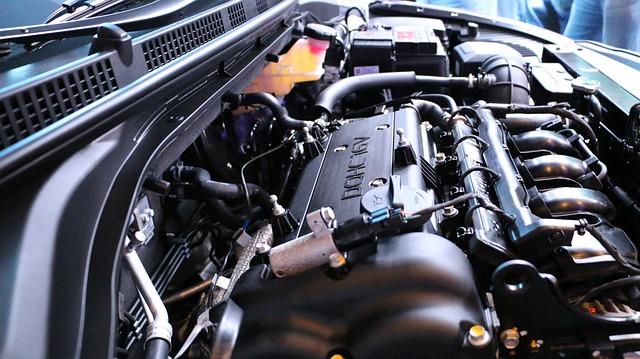Registering a car in California is a straightforward process, but understanding the requirements and preparing ahead of time ensures a smooth experience. To ensure your vehicle’s legal status on California roads, you must meet specific eligibility criteria and gather essential documents. This guide walks you through each step, from gathering necessary paperwork to scheduling an appointment at the DMV and completing post-registration tasks, including proper VIN verification using a trusted dmv vin verifier.
- Understand Eligibility Requirements for Car Registration
- Gather Necessary Documents for California DMV
- Prepare Your Vehicle's VIN for Verification
- Schedule and Attend Your DMV Appointment
- Complete Post-Registration Tasks After CalDMV Visit
Understand Eligibility Requirements for Car Registration

Before registering your car in California, it’s crucial to understand the eligibility requirements set by the Department of Motor Vehicles (DMV). One key aspect is ensuring that your vehicle meets all safety and emissions standards. A valid registration also depends on owning or leasing a car with a unique Vehicle Identification Number (VIN). The VIN is a 17-character code that acts as a fingerprint for your vehicle, making it easy to verify its history through services like a DMV VIN verifier.
To make the process smoother, consider utilizing mobile VIN inspection tools that allow you to check your car’s eligibility from the comfort of your home or even while on the go. These tools cross-reference your VIN with state and national databases, providing instant insights into any potential issues that might delay registration. By being proactive and understanding these requirements, you can avoid unnecessary delays and ensure a seamless registration experience.
Gather Necessary Documents for California DMV

Before you begin the registration process, it’s crucial to gather all the essential documents required by the California DMV (Department of Motor Vehicles). This includes your vehicle’s Registration Application (Form DVF 140), which can be obtained online or in person. Additionally, you’ll need proof of identification, such as a valid driver’s license or state-issued ID card, and proof of insurance. The DMV also requires the Vehicle Identification Number (VIN) from your car, which can be found on the vehicle’s title or registration documents. For added convenience, many individuals opt for a mobile VIN inspection or verification service, ensuring all details are accurate before heading to the DMV.
Furthermore, if you’re purchasing a used vehicle, you might require additional paperwork, such as a Bill of Sale, and possibly a clean vehicle history report from services that specialize in running vehicle identification number (VIN) checks. These measures ensure a smooth registration process and help protect against potential issues down the road.
Prepare Your Vehicle's VIN for Verification

Before you can register your car in California, ensure your vehicle’s VIN (Vehicle Identification Number) is prepared for verification by the DMV. This crucial step involves clearing any debris or damage that might obscure the VIN, as it plays a pivotal role in the registration process. A clear and legible VIN is essential for a successful mobile vin inspection or even a standard vin inspection at a local facility.
You can facilitate this process yourself before scheduling a mobile vin verification or visiting a DMV office. Remove any plates, stickers, or debris that might cover the VIN, usually located on the driver’s side of the vehicle. This ensures that the dmv vin verifier can accurately scan and confirm your car’s identity during the registration procedure.
Schedule and Attend Your DMV Appointment

After gathering all your documents and ensuring your vehicle meets California’s requirements, it’s time to schedule and attend a DMV appointment. The process involves several steps, including verifying your Vehicle Identification Number (VIN) with a DMV-approved VIN verifier. You can opt for a traditional in-person visit or utilize the convenience of a mobile vin verification service.
Choosing a mobile vin inspection option can save you valuable time and effort. With this service, a trained professional will come to your location, perform a thorough inspection, and ensure that your vehicle’s details match the information on file with the DMV. This step is crucial in the registration process, as an accurate VIN verification ensures your car complies with California’s standards, streamlining the entire registration procedure.
Complete Post-Registration Tasks After CalDMV Visit

After completing your registration process at the California DMV, there are several crucial post-registration tasks to ensure everything is in order. One essential step is obtaining a Vehicle Identification Number (VIN) verifier from a trusted source. This verification process ensures that the vehicle’s history is accurate and free from any discrepancies. You can opt for a mobile VIN inspection or use a mobile VIN verifier app, which provides a convenient way to validate your car’s information.
Additionally, keeping records of all documents related to registration, insurance, and maintenance is vital. Ensure you have a complete set of papers, including the vehicle registration certificate, proof of insurance, and any service or repair records. These documents will be valuable if you ever need to prove ownership or demonstrate proper vehicle maintenance during future transactions or inspections.
Registering a car in California involves several straightforward steps, from understanding eligibility requirements to providing necessary documents and verifying your vehicle’s VIN. By gathering all required paperwork and attending a DMV appointment, you can efficiently complete the process. Remember to conduct post-registration tasks as needed, ensuring your vehicle is legally registered and ready for California’s roads. For accurate verification, consider using a trusted dmv vin verifier to streamline the initial checks.



